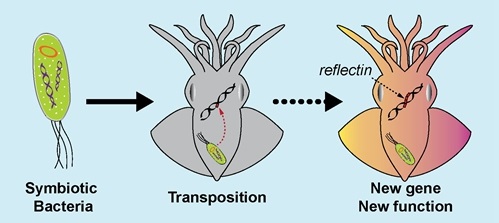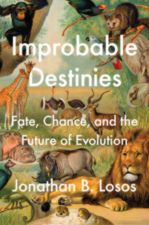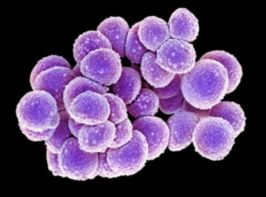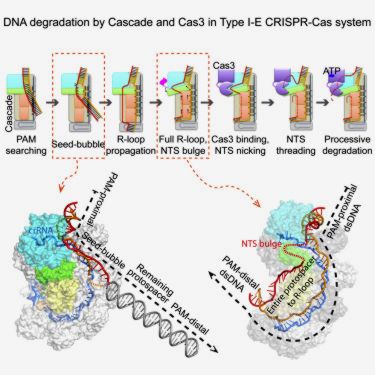What'sNEW July - September 2017
 Sri Lanka names Chandra Wickramasinghe Global Scientist of the Year in a ceremony at the Hilton Hotel in Colombo, yesterday.
Sri Lanka names Chandra Wickramasinghe Global Scientist of the Year in a ceremony at the Hilton Hotel in Colombo, yesterday.
 more about Chandra more about Chandra
 Early trace of life from 3.95 Ga sedimentary rocks in Labrador, Canada by T. Tashiro et al., Nature, 25 Sep 2017; and
commentary, PhysOrg.com 27 Sep 2017. Early trace of life from 3.95 Ga sedimentary rocks in Labrador, Canada by T. Tashiro et al., Nature, 25 Sep 2017; and
commentary, PhysOrg.com 27 Sep 2017.
 Life Before 3850 Million Years Ago? has more links about very old life. Life Before 3850 Million Years Ago? has more links about very old life.
 Thanks, George Nickas and Stan Franklin. Thanks, George Nickas and Stan Franklin.
| 27 Sep 2017 |
What'sNEW about HGT  | | |
New research looks at multiple waves of LINE retrotransposition and the birth of new mobile elements during primate evolution, and their impact on the evolving human brain. Linker et al. note that novel inclusions within the genome were apparently installed contemporaneously with speciation events, new proteins and increases in the size and complexity of the brain. A causal relationship is likely. Novel inclusions with programming for new proteins and for evolutionary advances would surprise standard darwinism and support cosmic ancestry.

"Phylogenetic timeline of primate evolution ...with branch points denoting the hypothesized most recent common ancestor (million years ago). Drawings underneath each branch represent the increased brain volume and cortical folding for each genus. The waves of retrotransposition that have been predicted to occur within the past 63 million years in primates are shown for two major families of retrotransposons; Alu (blue) and L1 (green). For each wave of retrotransposition the names of common active subfamilies are noted. New additions to the genome driven by each wave of retrotransposition are noted in red and coinciding changes in brain structure are noted in black" |
 Examining non-LTR retrotransposons in the context of the evolving primate brain by Sara Linker et al., doi:10.1186/s12915-017-0409-z, BMC Biology, 11 Aug 2017. Examining non-LTR retrotransposons in the context of the evolving primate brain by Sara Linker et al., doi:10.1186/s12915-017-0409-z, BMC Biology, 11 Aug 2017.
 Viruses and Other Gene Transfer Mechanisms has more about evolution by HGT. Viruses and Other Gene Transfer Mechanisms has more about evolution by HGT.
 New genetic programs in Darwinism and strong panspermia includes predictions that are supported by the above graph and accompanying research. New genetic programs in Darwinism and strong panspermia includes predictions that are supported by the above graph and accompanying research.
| 12 Sep 2017 |
What'sNEW about HGT  | | |
Octopus, squid, and cuttlefish can change body coloration and pattern almost instantly, to camouflage themselves or warn others. Reflectin, a protein found in only these species, makes this possible. Now, a team from the School of Life Sciences, Peking University, hypothesizes ...that a horizontal gene transfer (HGT) event introduced the reflectin gene into ancient cephalopods.

Here again, HGT apparently provides a genetic program for macroevolutionary progress among eukaryotes. And the program could serve no related purpose in the donor species, so there was no apparent opportunity for darwinian mutation-and-selection to compose it. Here again, the evidence surprises standard darwinism and supports cosmic ancestry.
 Origin of the Reflectin Gene and Hierarchical Assembly of Its Protein, by Zhe Guan, Tiantian Cai et al., doi:10.1016/j.cub.2017.07.061, Current Biology, 07 Sep 2017. Origin of the Reflectin Gene and Hierarchical Assembly of Its Protein, by Zhe Guan, Tiantian Cai et al., doi:10.1016/j.cub.2017.07.061, Current Biology, 07 Sep 2017.
 Research group discovers the origin of octopuses' instant modulation of body coloration, by Zhou Yijing, PhysOrg.com, 11 Sep 2017. Research group discovers the origin of octopuses' instant modulation of body coloration, by Zhou Yijing, PhysOrg.com, 11 Sep 2017.
 Thanks, Google Alerts. Thanks, Google Alerts.
 Viruses and Other Gene Transfer Mechanisms has links to a hundred or more similar examples. Viruses and Other Gene Transfer Mechanisms has links to a hundred or more similar examples.
Nigel Goldenfeld, who collaborated with Carl Woese, studies biological evolution from the perspective of a physicist. We welcome his fresh approach. With Woese, he understood and proclaimed the importance of horizontal gene transfer (HGT) early on. This understanding began with prokaryotes but grew to include all of life. One salient example involves photosynthesis. Goldenfeld comments, Ten years or so ago, it was discovered that these phages have photosynthesis genes, too. Now, you normally wouldn't think of a virus as needing to do photosynthesis. So why are they carrying these genes around? ...Photosynthesis genes have shuttled back and forth between the bacteria and the phages several times over the last 150 million years.

Goldenfeld thinks that HGT with viruses helps their bacterial host adapt to changing light faster than the bacteria alone could, because genes undergo point mutations more rapidly in viruses. That's pretty interesting, even if the necessary mutations are few. Of course, delivering photosynthesis genes by HGT originally is already interesting.
He also notices that evolution was rapid when life first emerged on Earth, but is slower now. Following a computer simulation, he observes, ...life automatically shuts off the horizontal gene transfer once it has evolved enough complexity. ...It's still trying to do horizontal gene transfer, but almost nothing sticks.
With respect to the origin of life, he says, ...given that life started as something physical and not biological, [life's start] is fundamentally a physics question. He further believes, There was definitely simpler life before [3.8 billion years ago] – life that didn't even have genes.... Evolution was going on before genes even existed.... We understand the physics-related grounding for this position, the big bang. But from the perspective of biology, life without genes is pure conjecture. And the theory of evolution, gridlocked in public opinion, needs fresh conjecture. So, thanks, Nigel. Please, carry on!
 Seeing Emergent Physics Behind Evolution, an interview with Nigel Goldenfeld, Quanta Magazine, 31 Aug 2017. Seeing Emergent Physics Behind Evolution, an interview with Nigel Goldenfeld, Quanta Magazine, 31 Aug 2017.
 Viruses... has more about photosynthesis delivered by HGT. Search the page for "photosynthesis". Viruses... has more about photosynthesis delivered by HGT. Search the page for "photosynthesis".
 The RNA World has lots about origin-of-life theories. The RNA World has lots about origin-of-life theories.
 7 Jul 2014, an earlier entry about Goldenfeld. 7 Jul 2014, an earlier entry about Goldenfeld.
 6 Oct 2009, ...compelling documentations of horizontal gene transfer in eukaryotes..., Woese and Goldenfeld. 6 Oct 2009, ...compelling documentations of horizontal gene transfer in eukaryotes..., Woese and Goldenfeld.
 04 Dec 2018: Nonhomologous end-joining and retroelements ...in the evolution of advanced life [Goldenfeld et al.] 04 Dec 2018: Nonhomologous end-joining and retroelements ...in the evolution of advanced life [Goldenfeld et al.]
...gene expression is activated in an otherwise silent region via a different code embedded in histone marks rather than DNA sequence. A team at the Institute of Molecular Biotechnology in Vienna first observed this surprising mechanism in fruitflies. To us it is another example of the robust software management that genomes need in order to avert crashes and make sustainable evolutionary progress.
 How Cells Hack Their Own Genes, Institute of Molecular Biotechnology (+Newswise), 23 Aug 2017. How Cells Hack Their Own Genes, Institute of Molecular Biotechnology (+Newswise), 23 Aug 2017.
...Here we identify a heterochromatin-dependent transcription machinery in Drosophila that allows piRNA precursor production despite potent silencing of transposon-encoded promoters and enhancers. We show that Moonshiner-dependent transcription, which cannot rely on recognition of DNA motifs because of their inaccessibility in heterochromatin, achieves locus specificity through Rhino, an HP1 variant that binds H3K9me3 marks at piRNA clusters.... Thereby the cell allows transcription of transposon-rich loci into piRNA precursors while transcription of the same loci into functional transposon mRNAs is suppressed via heterochromatin-mediated exclusion of sequence-specific transcription factors.
...Small RNA source loci embedded in heterochromatin and transcribed on both genomic strands are also a hallmark of genome defence pathways in plants and fungi.
...The recurring evolution of small RNA source locus transcription specified by chromatin marks rather than DNA sequence suggests that this constitutes a common alternative mode of transcriptional activation. |
 A heterochromatin-dependent transcription machinery drives piRNA expression, by Peter Refsing Andersen, Laszlo Tirian, Milica Vunjak and Julius Brennecke, doi:10.1038/nature23482, Nature, online 23 Aug 2017. A heterochromatin-dependent transcription machinery drives piRNA expression, by Peter Refsing Andersen, Laszlo Tirian, Milica Vunjak and Julius Brennecke, doi:10.1038/nature23482, Nature, online 23 Aug 2017.
 We recognize the need to establish a webpage for discussion and links about robust software management. We recognize the need to establish a webpage for discussion and links about robust software management.
Improbable Destinies, by Harvard herpetologist Jonathan Losos, asks: How predictable is evolution? Would "replaying the tape" produce a completely different outcome, as Stephen Jay Gould famously believed? Or is evolution rampantly "convergent," as Simon Conway Morris supports with many examples? Losos carefully deconstructs the question and presents evidence for both sides.

Right away we get deep into the story of the Burgess shale, whose fossils Conway Morris re-examined with fresh eyes, and which Gould publicised in Wonderful Life (1989). Soon, Losos introduces his own specialty, lizards, and his lifelong study of them. Researches by other evolutionary specialists also pertain the original question, and their personal stories are entertaining.
Losos wants to tackle the question experimentally, so projects like Richard Lenski's years-long culturing of cloned bacteria get close attention. We were delighted to read about the Rothamstead Research Station in England, with some experiments begun more than a century ago. And we especially enjoyed learning about odd species like the aye-aye of Madagascar, with astonishing features like ever-growing incisors and "an elongate, skeletal middle finger capable of rotating in any direction."
Losos's eventual answer is: both. Evolution repeats itself sometimes, but often doesn't. While we enjoyed and recommend the book, we wish the question were treated from a perspective beyond strict darwinism. Most of the evolution probed in detail is micro-evolution, by which we mean evolution attainable with only a few point-mutations, so not forbiddingly improbable. (We were pleased to learn a term for changes requiring no germ-line genetic mutations, "phenotypic plasticity".) When macro-evolution is observed, the genetic changes that may produce it get insufficient attention. Computer models are not mentioned. We wish that evolutionary biologists who are truly curious would ask this question: Where do new genetic programs come from?
 Improbable Destinies: Fate, Chance, and the Future of Evolution, by Jonathan B. Losos, Riverhead Books, Aug 2017. Improbable Destinies: Fate, Chance, and the Future of Evolution, by Jonathan B. Losos, Riverhead Books, Aug 2017.
 Neo-Darwinism: The Current Paradigm has sections about Punctuated Equilibrium and Convergent Evolution. Neo-Darwinism: The Current Paradigm has sections about Punctuated Equilibrium and Convergent Evolution.
 Rewinding the Tape is a related section under "Can the Theory Be Tested". Rewinding the Tape is a related section under "Can the Theory Be Tested".
 Macroevolutionary Progress Redefined... considers micro- and macro-evolution. Macroevolutionary Progress Redefined... considers micro- and macro-evolution.
 23 Aug 2017: Author Jonathan Losos responds. 23 Aug 2017: Author Jonathan Losos responds.
 Book Reviews Book Reviews
The implication is that once species become technological, they flame out and take the biosphere with them.
A mathematical astronomer from Arkansas proposes a plausible and sobering solution to Fermi's paradox:
Here we argue that ...the typical technological species becomes extinct soon after attaining a modern technology and that this event results in the extinction of the planet's global biosphere.
 Implication of our technological species being first and early by Daniel P. Whitmire, International Journal of Astrobiology, online 03 Aug 2017 (+alternate with author's summary). Implication of our technological species being first and early by Daniel P. Whitmire, International Journal of Astrobiology, online 03 Aug 2017 (+alternate with author's summary).
 The Implications of Cosmic Silence, University of Arkansas (+Newswise), 11 Aug 2017. The Implications of Cosmic Silence, University of Arkansas (+Newswise), 11 Aug 2017.
 Gaia has more about the longterm fate of living planets. Gaia has more about the longterm fate of living planets.
The possibility of life on Saturn's moon Enceladus drew increased interest in 2005, when NASA's Cassini mission observed a large plume of material erupting from the south polar terrain of Enceladus, sourced within a subsurface ocean of salty liquid water laced with organic compounds.... Now, as the Cassini mission is ending, Astrobiolgy devotes its current issue to the topic. Carolyn Porco's linked article introduces a dozen others, many available online. The photo from Cassini shows Enceladus and Saturn's rings.

 A Community Grows around the Geysering World of Enceladus by Carolyn C. Porco, doi:10.1089/ast.2017.1711, Astrobiology, online 25 Jul 2017. A Community Grows around the Geysering World of Enceladus by Carolyn C. Porco, doi:10.1089/ast.2017.1711, Astrobiology, online 25 Jul 2017.
 Life on Europa, Other Moons, Other Planets?... has related links. Life on Europa, Other Moons, Other Planets?... has related links.
Our origins are much less local than we previously thought.
 The Cosmic Baryon Cycle and Galaxy Mass Assembly in the FIRE Simulations by Daniel Anglés-Alcázar et al., arXiv:1610.08523 [astro-ph.GA], arXiv, subm. 26 Oct 2016. The Cosmic Baryon Cycle and Galaxy Mass Assembly in the FIRE Simulations by Daniel Anglés-Alcázar et al., arXiv:1610.08523 [astro-ph.GA], arXiv, subm. 26 Oct 2016.
 Milky Way's Origins Are Not What They Seem, by M. Fellman, Northwestern University (+Newswise), 26 Jul 2017. Milky Way's Origins Are Not What They Seem, by M. Fellman, Northwestern University (+Newswise), 26 Jul 2017.
Given how much of the matter out of which we formed may have come from other galaxies, we could consider ourselves space travelers or extragalactic immigrants.
 Geneticists in Scotland have observed that Staphylococcus aureus (pictured) acquired the gene that confers resistance to methicillin in the mid-1940s. But this antibiotic did not enter medical practice until 1959. The researchers must suppose that other earlier drugs somehow induced the bacteria to select for strains with this gene. Even if so, apparently, the gene was already there. This surprise, we suggest, adds evidence that genes come first.
Geneticists in Scotland have observed that Staphylococcus aureus (pictured) acquired the gene that confers resistance to methicillin in the mid-1940s. But this antibiotic did not enter medical practice until 1959. The researchers must suppose that other earlier drugs somehow induced the bacteria to select for strains with this gene. Even if so, apparently, the gene was already there. This surprise, we suggest, adds evidence that genes come first.
 Methicillin-resistant Staphylococcus aureus emerged long before the introduction of methicillin into clinical practice by Catriona P. Harkins et al., doi:10.1186/s13059-017-1252-9, Genome Biology, 20 Jul 2017. Methicillin-resistant Staphylococcus aureus emerged long before the introduction of methicillin into clinical practice by Catriona P. Harkins et al., doi:10.1186/s13059-017-1252-9, Genome Biology, 20 Jul 2017.
 Methicillin resistance was out there before methicillin, Nature Research Highlights, 24 Jul 2017. Methicillin resistance was out there before methicillin, Nature Research Highlights, 24 Jul 2017.
 ...MRSA Genesis Occurred Years Before Clinical Introduction of Methicillin, GenomeWeb, 21 Jul 2017. ...MRSA Genesis Occurred Years Before Clinical Introduction of Methicillin, GenomeWeb, 21 Jul 2017.
 Metazoan Genes Older Than Metazoa? and Metazoan Genes Older Than Metazoa? and  Genes Older Than Earth? are related local webpages. Genes Older Than Earth? are related local webpages.
The existence of so many more long-period comets than predicted suggests that more of them have likely impacted planets, delivering icy materials from the outer reaches of the solar system.
It apears that there is much more cometary material in the Oort Cloud than previously known. Their orbits place these large comets in interstellar space, where they might stray to and from orbits around other nearby stars. This traffic would increase the likelihood of interstellar panspermia.
 Large, Distant Comets More Common Than Previously Thought, Jet Propulsion Laboratory, NASA, 25 Jul 2017. Large, Distant Comets More Common Than Previously Thought, Jet Propulsion Laboratory, NASA, 25 Jul 2017.
 Debiasing the NEOWISE Cryogenic Mission Comet Populations by James M. Bauer et al., n 2, v 154, The Astronomical Journal, 14 Jul 2017. Debiasing the NEOWISE Cryogenic Mission Comet Populations by James M. Bauer et al., n 2, v 154, The Astronomical Journal, 14 Jul 2017.
 Thanks, George Nickas. Thanks, George Nickas.
 Comets: The Delivery System has more. Comets: The Delivery System has more.
| 15 Jul 2017 |
What'sNEW about HGT  | | |
Several studies have suggested that TE [transposable element] insertions have contributed to the rewiring and evolution of regulatory networks by recruiting multiple genes into the same regulatory circuit. That would well exemplify the robust software management that cosmic ancestry requires. And if the TEs are imported, as by viruses, this would mean that the transfer of genetic material (HGT) is even more imortant for evolution than we knew. Now a comprehensive study from Japan lists, categorizes and probes many examples of regulatory elements derived from HERVs:
 Systematic identification and characterization of regulatory elements derived from human endogenous retroviruses by Ito J, Sugimoto R, Nakaoka H, Yamada S, Kimura T, Hayano T, et al., doi:10.1371/journal.pgen.1006883, PLoS Genet, uncorrected proof online 12 Jul 2017. Systematic identification and characterization of regulatory elements derived from human endogenous retroviruses by Ito J, Sugimoto R, Nakaoka H, Yamada S, Kimura T, Hayano T, et al., doi:10.1371/journal.pgen.1006883, PLoS Genet, uncorrected proof online 12 Jul 2017.
 Viruses... has much more about HGT. Viruses... has much more about HGT.
 Robust Software Management is incomplete. Robust Software Management is incomplete.
 How bacteria remember and defend against harmful viruses has been observed at almost atomic resolution. The system has redundant, precise safety mechanisms. Seen in detail, it is another example of the robust software management that we believe genomes require.
How bacteria remember and defend against harmful viruses has been observed at almost atomic resolution. The system has redundant, precise safety mechanisms. Seen in detail, it is another example of the robust software management that we believe genomes require.
The [bacterial] immunity system works just as efficiently as ours, except our system functions at the protein recognition level, whereas CRISPR works at the nucleic acid recognition level — Ailong Ke, professor of molecular biology and genetics, Cornell University
 Bringing bacteria's defense into focus by Bill Steele, Cornell Chronicle (+Newswise), 30 Jun 2017; re: Bringing bacteria's defense into focus by Bill Steele, Cornell Chronicle (+Newswise), 30 Jun 2017; re:
 Structure Basis for Directional R-loop Formation and Substrate Handover Mechanisms in Type I CRISPR-Cas System by Yibei Xiao et al., doi:10.1016/j.cell.2017.06.012, Cell, 29 Jun 2017. Structure Basis for Directional R-loop Formation and Substrate Handover Mechanisms in Type I CRISPR-Cas System by Yibei Xiao et al., doi:10.1016/j.cell.2017.06.012, Cell, 29 Jun 2017.
 Robust Software Management is incomplete. Robust Software Management is incomplete.

 Did Life on Earth Come From Outer Space? by Daniel Oberhaus, Motherboard, 01 Jul 2017. Did Life on Earth Come From Outer Space? by Daniel Oberhaus, Motherboard, 01 Jul 2017.
The image shows an aerogel array for collecting dust on NASA's Stardust mission.
 Thanks, Chandra Wickramasinghe and Martin Langford. Thanks, Chandra Wickramasinghe and Martin Langford.
 Introduction: More than Panspermia has history. Introduction: More than Panspermia has history.
![]()
|





 Geneticists in Scotland have observed that Staphylococcus aureus (pictured) acquired the gene that confers resistance to methicillin in the mid-1940s. But this antibiotic did not enter medical practice until 1959. The researchers must suppose that other earlier drugs somehow induced the bacteria to select for strains with this gene. Even if so, apparently, the gene was already there. This surprise, we suggest, adds evidence that genes come first.
Geneticists in Scotland have observed that Staphylococcus aureus (pictured) acquired the gene that confers resistance to methicillin in the mid-1940s. But this antibiotic did not enter medical practice until 1959. The researchers must suppose that other earlier drugs somehow induced the bacteria to select for strains with this gene. Even if so, apparently, the gene was already there. This surprise, we suggest, adds evidence that genes come first.

